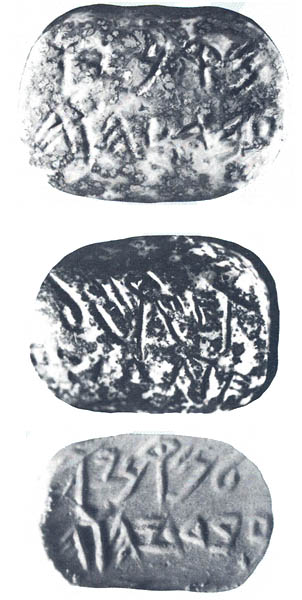An Eighth-Century “First”: God’s Name Found On A Hebrew Seal
Sidebar to: The Great Eighth Century

The oldest known, authentic Hebrew seal inscribed with the divine name “Yahweh” dates to the first half of the eighth century B.C.E. In fact, until the discovery of the inscribed storage jar at Kuntillet ‘Ajrud (see photo of inscribed storage jar), dated to 800 B.C.E., this seal contained the earliest occurrence of the divine name in any Israelite inscription. Made of highly polished red jasper blotched with white jasper veins, the finely crafted ovoid measures only about half an inch long and a quarter-inch wide. Although of uncertain provenance, it is believed to have been discovered in a tomb in the vicinity of Jerusalem. The seal lacks all ornamentation, such as a border or the double lines that usually separate lines of script. A longitudinal perforation through the seal suggests that the seal probably hung from a string.
Two lines of script appear on each side of the seal. On the obverse side (see photo, top), the inscription was written so as to be read directly, indicating that this side was not used for sealing. It says: mqnyw / ‘bd.yhwh, or “
Already a library member? Log in here.
Institution user? Log in with your IP address.

